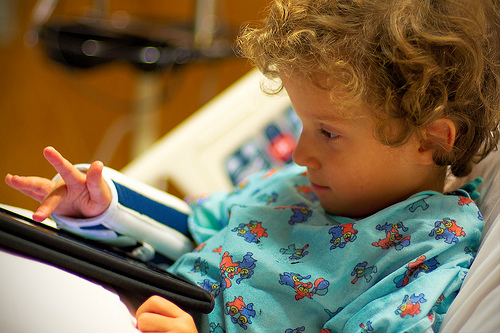Preschoolers and kindergarteners need to play. They need to run around outside, pretend and imagine, play with toys that encourage creativity, and even spend some time playing with screen-based technologies like video games and age-appropriate apps. For preschoolers and kindergarteners, play (especially play that helps young children internalize self-control skills) is actually more powerful for future learning than academic instruction. Unfortunately the last decade of education has been marked by increasing calls for testing, ensuring that core-based academic skills such as reading, math, and writing are often taught to the exclusion of opportunities for imaginative, structured, and digital play.
Kindergarten and early elementary grades have been most affected by the increasing emphasis on academic skills. This is particularly true in public settings, where there is great pressure on teachers to spend their time emphasizing school-readiness tasks such as early reading and math skills. Interestingly, this approach goes against the wealth of evidence-based studies indicating that play and the development of executive-functioning skills during early education is far more effective at improving improve academic skills in later years.
Organizations such as the National Academy for the Education of Young Children (NAEYC) and the Fred Rogers Center have taken up the cry to reintegrate play into the preschool and early elementary-school curricula. It is particularly important that we recognize how traditional and digital play contributes to the broader definitions of 21st-century skills such as collaboration, creativity, and problem solving. Many organizations, including NAEYC, which had previously been against the use of technology for preschoolers and kindergarteners are now recognizing the power of these technologies and the inevitability of their use with young children, so they have written a series of position papers supporting technology use in the preschool classroom.
Digital play, by which we mean a voluntary, pleasurable, and energizing activity that involves the use of a range of digital media and technologies, is an opportunity to integrate the development of skills and education. There are literally hundreds of new apps, video games and other digital technologies, designed specifically for preschoolers and early elementary children, that integrate having fun with problem solving and academic skills. Increasingly, digital apps and games are being used in the classroom and many parents are taking the opportunity to supplement their children’s education by using these tools at home. Digital play that is open ended in nature such as art apps like iLuv Drawing and building programs like Bricasso provide new avenues for unstructured, imaginative, and creative play for preschoolers.
As beneficial as these technologies can be, a word of caution is necessary. Digital play should not replace opportunities for traditional, unstructured, creative, and free play in a child’s day. Because digital play may overtly offer the opportunity for education, and is certainly a powerful draw for children’s attention, it becomes incumbent on the part of parents and teachers that they insure that more traditional forms of play remain a part of a child’s daily life. Also, because digital media such as interactive electronic books and engaging “skill and drill” apps can be such powerful teaching tools, it is important to not let these “games” replace traditional, hands on, kid-driven play.





7 year old child games